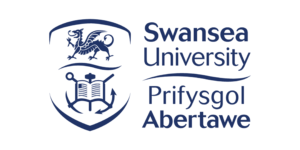Case study: Swansea University
State of Open: The UK in 2021
Phase Two: “UK Adoption”

 Professor Tom Crick MBE, Professor of Digital & Policy
Professor Tom Crick MBE, Professor of Digital & Policy
Synopsis
Swansea University has a strong engineering heritage, with an international reputation for its computer science and engineering departments. Open source software has long supported much of the research undertaken here and is becoming increasingly vital for learning and teaching. Professor Tom Crick, MBE, argues that since so much of our digital world is based on open source, it is vital that we teach our young people how this works. Therefore, learning about open source is included as a core part of interdisciplinary STEM-based delivery at the University.
7.4 Swansea University: Broadening the scope of open in education
In conversation with Prof Tom Crick MBE, Professor of Digital & Policy
Founded in 1920, Swansea University is a leading research-led university based in South Wales, with a strong engineering heritage, having been originally set up as a technical institution to support the industrial needs of the region. With three faculties spread across two campuses, it currently offers about 330 undergraduate courses and 120 postgraduate courses to over 20,000 students, with an international reputation for its computer science and engineering provision.
Open source software and infrastructure, has long supported much of the research undertaken and has become increasingly visible and important for learning and teaching (L&T). Professor Tom Crick splits his time between the £32m Computational Foundry and the Faculty of Humanities and Social Sciences.
Learning & Teaching
Historically, computer science had not been prioritised across the UK’s four education systems, with challenges in developing digitally confident and capable young people, including what it means to engage with open source. For Tom, this begins at school. Tom played a leading role in ensuring young people develop digital and data skills in Wales. He chaired the Welsh Government’s independent review of the ICT curriculum in 2013, leading to the development of a bilingual cross-curricular Digital Competence Framework in 2016.
In January 2020, the new Curriculum for Wales was published which promotes cross curricular digital competence as a statutory skill alongside literacy and numeracy. This underpins the wider interdisciplinary approach and mindset at Swansea University; as Tom says, “our digital world is predicated on open source software and infrastructure… we’re doing our young people a disservice if we don’t teach them that’s how our world works.”
Learning about open source is crucial to this, and it is included as a core part of interdisciplinary STEM-based delivery at the University. Tom says, it’s a “no brainer” that students are exposed to these tools because it has become so prevalent in industry, and their courses are designed with both strong theoretical and technical foundations, as well the needs of future employers at their core.
Open Source in the University
Tom explains that the awareness of open source in connection with research and innovation activities has increased because it is simply, “how research is done” today. The reason you can reuse, adopt and adapt existing tools and data and infrastructure is because they are open source. Tom explains that the benefits are clear across diverse research communities and disciplines.
In line with international initiatives and shifts in policy, research grants from the major UK funding bodies come with the stipulation that the outputs of research should be publicly available. This means that publications and datasets must be deposited and discoverable in open repositories. Increasingly, this also means that computational artefacts must be made available to ensure that research is reproducible and reusable. Using open source helps verify both data generated and the results which underpins the scientific body of knowledge, as well as potentially speeding up innovation.
Cutting-edge work by computer science students at Swansea in the areas of human-centred AI and data science, cyber security, and computationally-intensive optimisation problems, uses open source software tools and infrastructure. In fact, when it comes to major projects in computer science, Tom says, when “there’s a strong technical/development aspect to that project then most of them would be using or applying some form of open source software, tool or resource.”
